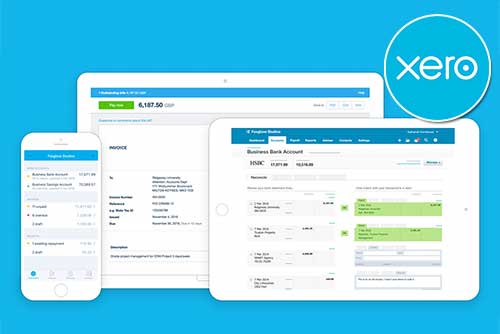Understanding Profit: A Comprehensive Guide
In business, the term ‘profit‘ is often thrown around as a measure of success. But what exactly does it mean? In this article, we will explain everything you need to know about profit for UK companies, including the different types and how they are calculated. Plus, we will discuss the different methods used to maximise it! So, let’s get started.
What is Profit?
Simply put, the term profit refers to the financial gain you obtain when the amount earned from your business activity surpasses the expenses, costs, and taxes needed to sustain it.
Delving deeper, though, we find that the word profit comes from the Latin words ‘profectus’ and ‘proficere’, which mean ‘progress’ or ‘to advance‘. So, profit is a financial gain… but the term is not a one-size-fits-all one! There are different types of profit, each with its unique characteristics and implications that can affect how you make decisions surrounding your business.
What’s important to remember is that profit is more than just a number on a balance sheet. It’s actually a vital indicator of your company’s health and a key driver of business growth.
Calculating Profit
The calculation of profit is very straightforward:
Profit = Total Revenue – Total Expenses
This simple equation, however, is not merely a measure of money earned. Profitable companies are coveted by investors, as profits can be used as dividends and returned to shareholders or reinvested in your organisation to increase stock value. Business owners can benefit from profits, too, as they can choose to either pocket the cash or reinvest it back into the company.
The exact origin of profits is a topic of interest among economists. Some argue that profits arise from surplus labour extracted from workers by business owners, while others suggest that profits compensate for the risk that entrepreneurs take on when starting a business.
Regardless of its origins, however, growing profits signal a thriving company, while a bottom line that is shrinking could be a warning sign of trouble ahead.
Different Types of Profit
You have probably heard about gross profit, operating profit, and net profit, the three major types of profit that businesses report. Each provides a different perspective on a company’s performance. Let’s take a closer look at them.
Gross Profit
Gross profit, the first level of profitability, is calculated by subtracting the cost of goods sold (COGS) from sales. In other words:
This figure provides a snapshot of a company’s efficiency in producing and selling its products or services.
Operating Profit
Operating profit, on the other hand, takes into account operating expenses, including overhead and indirect costs, as well as accounting costs like depreciation and amortization. Operating profit is calculated by subtracting operating expenses from gross profit:
This type of profit, also known as earnings before interest and taxes (EBIT), offers a more comprehensive view of a company’s operational profitability.
Net Profit
Lastly, we have net profit, which is the final figure after all expenses, including interest and taxes, have been deducted.
Your company’s net profit is calculated by subtracting all expenses, including taxes and interest, from the total revenue:
Often referred to as the “bottom line,” net profit is the ultimate measure of a company’s profitability. It indicates how much a company has left over for dividends, retained earnings, debt repayment, or reinvestment.
The Importance of Profit
Profit is the lifeblood of any enterprise because it reflects the efficiency and effectiveness of operations. For instance:
- Profit is not just about money; it’s a measure of the value a business creates and a reward for taking risks, innovating, and providing goods or services that meet customer needs.
- Profit fuels business growth. It provides the resources for investment in new products, markets, and technologies and enables businesses to expand their workforce, increase production capacity, and improve their competitive position.
- Profit is also a vital tool for decision-making, as it can guide strategies and tactics. As a key performance indicator, it can help your business identify strengths to build on and weaknesses to address.
- Lastly, profit signals to investors, lenders, and other stakeholders. It demonstrates your business’s financial health and future potential and can influence vital decisions about funding, partnerships, and other forms of support.
In essence, profit is a business’s heartbeat. It’s the measure of success today and the promise of growth tomorrow!
Profit as a Measure of Success
Profit is a critical metric in determining business success because a profitable company is seen as a successful one. A high profit margin indicates a highly efficient business model, as profit measures your company’s ability to convert sales into actual earnings (after accounting for all costs).
What’s more, your profits can also give you a great snapshot of your company’s financial position at a given point in time. For example, if you have a consistently profitable company, you’re more likely to have a strong cash flow—which is vital for maintaining operational continuity and for attracting investors!
But that’s not all. Profit can serve as a benchmark for performance, too, because it allows businesses to compare their performance against competitors and industry standards.
Profit and Business Growth
Investors know that a business that consistently generates profit is more likely to expand, invest in new ventures, and weather economic downturns. Profit, in essence, provides the financial fuel for a business to thrive and evolve, especially if profit is reinvested back into the business.
For instance, this could take the form of research and development, expansion into new markets, or upgrading infrastructure and technology. Such reinvestments can enhance your company’s competitive edge, leading to increased market share and, subsequently, even higher profits.
However, while profit is essential for business growth, it must be managed wisely. An excessive focus on short-term profits at the expense of long-term strategy can lead to unsustainable growth and potential financial instability.
Understanding and Calculating Profit Margins
Understanding how you can calculate your margins is crucial for both business owners and investors, as it provides a clear picture of your company’s performance and potential for growth.
What Are Profit Margins?
Essentially, profit margins represent the percentage of sales that has turned into profits. The higher the profit margin, the more efficient the company is in converting revenue into actual profit.
As we have covered above, profits are the financial gain realized from your business operation after all expenses and taxes have been deducted from your revenues (in other words, the actual amount of money that remains after all costs are subtracted). Profit margins, on the other hand, are a ratio or percentage that measures the profitability of such a business relative to its revenue.
Just like there are three types of profits, there are also three types of profit margins: gross profit margin, operating profit margin, and net profit margin:
- Gross profit margin is the profit a company makes after deducting the costs associated with making and selling its products. This margin is important as it reflects the core profitability of a company before overhead costs.
- Operating profit margin takes into account operating expenses such as overhead and indirect costs. It provides a more comprehensive view of how well a company is managing its costs relative to its net sales.
- Net profit margin is the final line of any income statement and the percentage of revenue that ultimately becomes profit. This margin takes into account all expenses, including taxes and interest, and is a true measure of a company’s profitability.
Conclusion: The Essential Role of Profit in Business
Profit, as you can see, plays a pivotal role in helping companies thrive and grow. It’s the financial reward you receive for taking risks and investing your time and resources and a measure of success that tells stakeholders whether your business is performing well or not.
Profit, in its various forms—gross, operating, and net—provides a comprehensive picture of your company’s financial health and can, therefore, help analysts make informed decisions.
Understanding profit, how it’s calculated, and its role in business is essential for anyone involved in the business world. If you need help understanding your profits and profit margins or you simply want to access a stress-free accountancy service, Mazuma can help.





















